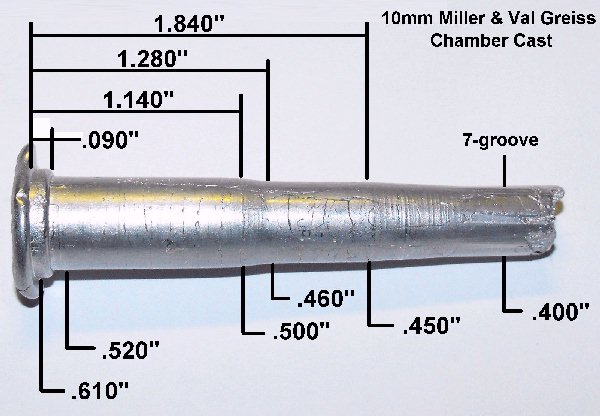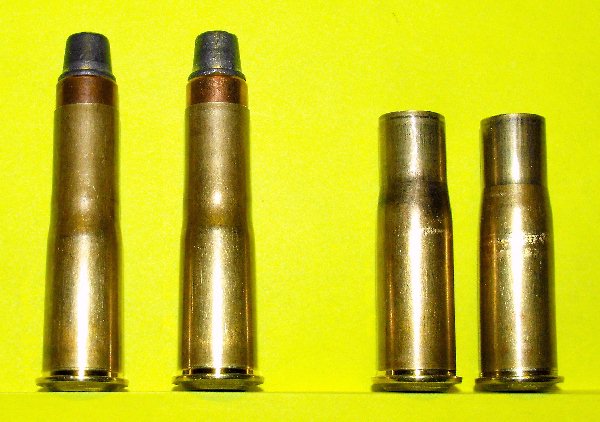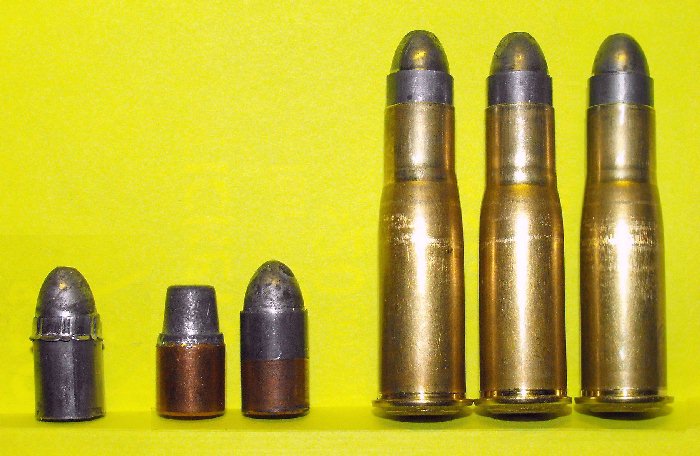Hello all,
I just purchased another Miller & Val. Greiss Double rifle. Based on a chamber cast, I think its 10x47R caliber. This would be a strange caliber for a Double Rifle. ? ?
There are no proof marks anywhere to be found. There is no caliber marking either. Only marks are "Miller & Val. Greiss / Munchen" on each lock and an "LS" on the bottom of one the left barrel.
Questions: -
Why no proof marks?
Any idea what the "LS" stamp is?
What would be the corredt bullet weight for 10x47R? ( I need this info to try to load cartridges to see if the rifle is still in regulation )
Here are the specs:
Swing-Lever Double Hammer Double Rifle - Non-Rebounding Hammers - Engraved Receiver & Back-Action Side Locks - Barrels marked "LS" "12762" - Locks marked "Miller & Val Greiss / Munchen" - Gold Inlaid Decorative Breech Bands - 6 lbs 13 oz - 13-3/8" LOP - 24-13/16" Barrels - 1 Standing 1 Folding Leaf Rear Site + Pop-up Tang Site - Set Triggers - Horn Swing-Lever - Spur Trigger Guard w/ Pierced & Scrolled Dark Horn Finger Rest - Steel Engraved Trap Butt Plate - Sling Swivels
thanks

I just purchased another Miller & Val. Greiss Double rifle. Based on a chamber cast, I think its 10x47R caliber. This would be a strange caliber for a Double Rifle. ? ?
There are no proof marks anywhere to be found. There is no caliber marking either. Only marks are "Miller & Val. Greiss / Munchen" on each lock and an "LS" on the bottom of one the left barrel.
Questions: -
Why no proof marks?
Any idea what the "LS" stamp is?
What would be the corredt bullet weight for 10x47R? ( I need this info to try to load cartridges to see if the rifle is still in regulation )
Here are the specs:
Swing-Lever Double Hammer Double Rifle - Non-Rebounding Hammers - Engraved Receiver & Back-Action Side Locks - Barrels marked "LS" "12762" - Locks marked "Miller & Val Greiss / Munchen" - Gold Inlaid Decorative Breech Bands - 6 lbs 13 oz - 13-3/8" LOP - 24-13/16" Barrels - 1 Standing 1 Folding Leaf Rear Site + Pop-up Tang Site - Set Triggers - Horn Swing-Lever - Spur Trigger Guard w/ Pierced & Scrolled Dark Horn Finger Rest - Steel Engraved Trap Butt Plate - Sling Swivels
thanks








Comment